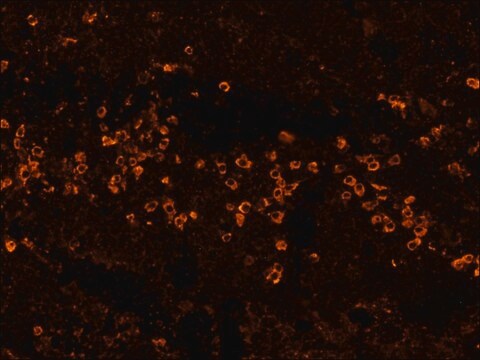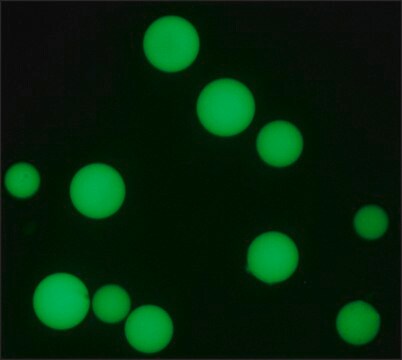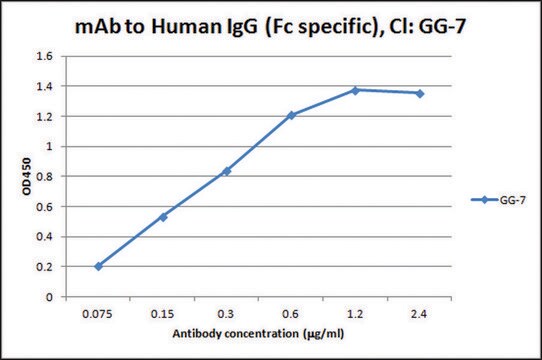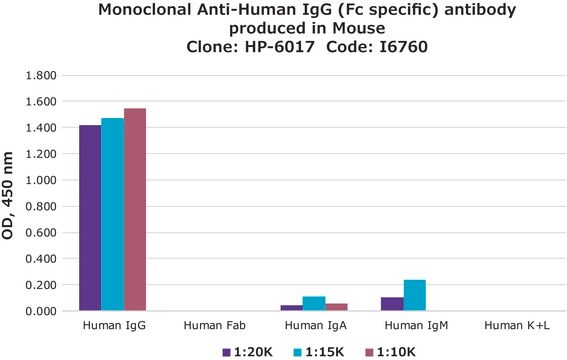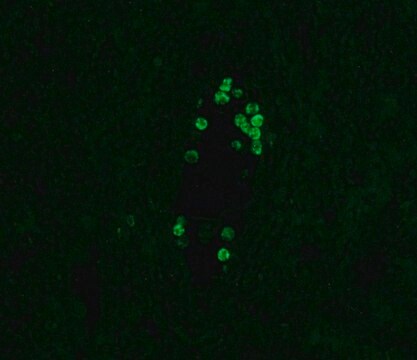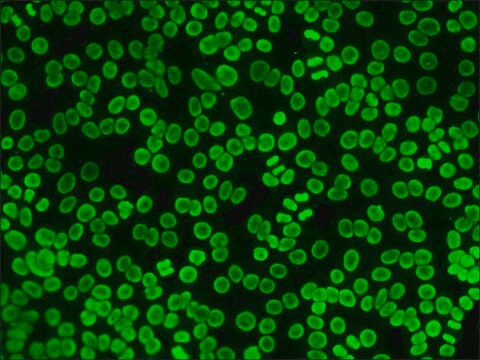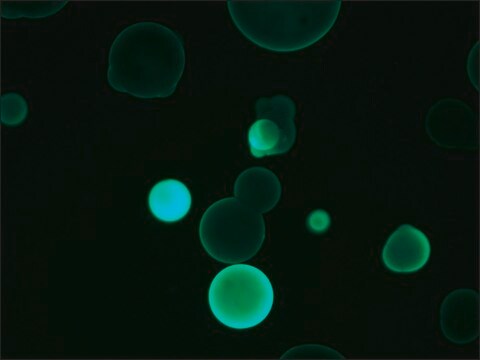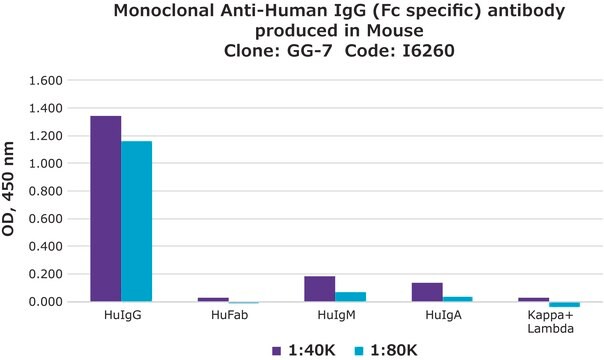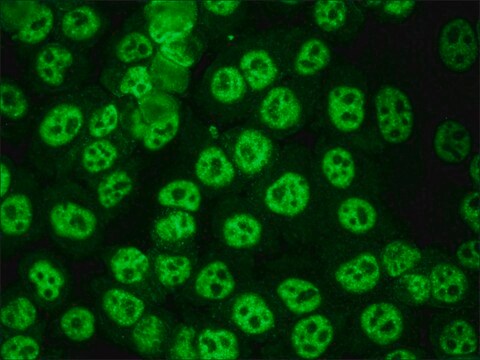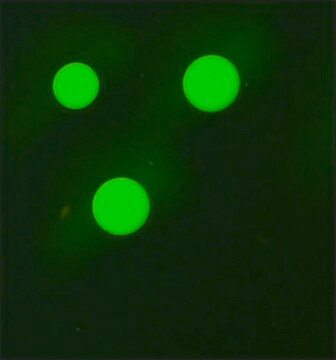F5016
Anti-Human IgG (Fc specific)−FITC antibody, Mouse monoclonal
clone HP-6017, purified from hybridoma cell culture
Sinonimo/i:
Monoclonal Anti-Human IgG (Fc specific)
About This Item
Prodotti consigliati
Origine biologica
mouse
Livello qualitativo
Coniugato
FITC conjugate
Forma dell’anticorpo
purified from hybridoma cell culture
Tipo di anticorpo
secondary antibodies
Clone
HP-6017, monoclonal
Forma fisica
buffered aqueous solution
Reattività contro le specie
rabbit, sheep, horse (IgG), goat, human
Condizioni di stoccaggio
protect from light
tecniche
dot immunobinding: 1:16
particle immunofluorescence: 1:16
Isotipo
IgG2a
Condizioni di spedizione
dry ice
Temperatura di conservazione
−20°C
modifica post-traduzionali bersaglio
unmodified
Cerchi prodotti simili? Visita Guida al confronto tra prodotti
Descrizione generale
Specificità
Applicazioni
- Fluorescent Dot Immunobinding Assay (F-DIBA)
- Particle Immunofluorescent Assay (F-IFMA)
- flow cytometry
Azioni biochim/fisiol
Stato fisico
Esclusione di responsabilità
Non trovi il prodotto giusto?
Prova il nostro Motore di ricerca dei prodotti.
Avvertenze
Danger
Indicazioni di pericolo
Consigli di prudenza
Classi di pericolo
Resp. Sens. 1 - Skin Sens. 1
Codice della classe di stoccaggio
12 - Non Combustible Liquids
Classe di pericolosità dell'acqua (WGK)
WGK 3
Punto d’infiammabilità (°F)
Not applicable
Punto d’infiammabilità (°C)
Not applicable
Certificati d'analisi (COA)
Cerca il Certificati d'analisi (COA) digitando il numero di lotto/batch corrispondente. I numeri di lotto o di batch sono stampati sull'etichetta dei prodotti dopo la parola ‘Lotto’ o ‘Batch’.
Possiedi già questo prodotto?
I documenti relativi ai prodotti acquistati recentemente sono disponibili nell’Archivio dei documenti.
I clienti hanno visto anche
Il team dei nostri ricercatori vanta grande esperienza in tutte le aree della ricerca quali Life Science, scienza dei materiali, sintesi chimica, cromatografia, discipline analitiche, ecc..
Contatta l'Assistenza Tecnica.
